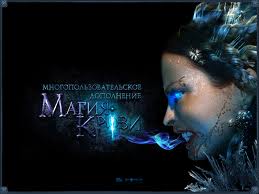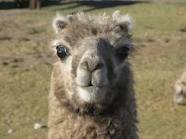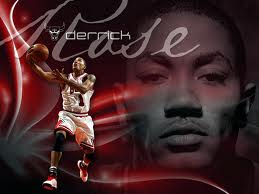Or, you know, the Dostoevsky book.
TES Vs. Wow
Or, you know, the Dostoevsky book.
-

Dean Ashcroft - Posts: 3566
- Joined: Wed Jul 25, 2007 1:20 am
You mean the epic play by Homer? Oh wait-- that's the ILLIAD.... my bad.
Dostoevsky. I'm not sure if I have the Iliad. A lot of my library came from my sister during her undergrad years, even the outdated poli sci ones.
I'm really happy about this. I found books about famous political thinkers packed with logic books, game manuals, and 2nd and 3rd edition D&D manuals.
-

Matthew Aaron Evans - Posts: 3361
- Joined: Wed Jul 25, 2007 2:59 am
tes has lore that gamers aren't even aware of when they're playing . There is no comparision . WoW lore is a day course at the community colleage . Tes lore is a 4 year degree 
-

Fanny Rouyé - Posts: 3316
- Joined: Sun Mar 25, 2007 9:47 am
WarCraft has Lore yes it is not so much as in The Elder Scrolls, but it has Lore, trough they included more SciFi - Mumbo Jumbo, .
Because TES has absolutly no Sci-Fi Mumbo Jumbo at all. Especially no Giant Spaceship-Towers, no manauts, no sun-expeditions, and definitely no Super-Murder-Robots-With-Lasers sent back in time, in perfect Terminator style. :rolleyes:
-

cheryl wright - Posts: 3382
- Joined: Sat Nov 25, 2006 4:43 am
Because TES has absolutly no Sci-Fi Mumbo Jumbo at all. Especially no Giant Spaceship-Towers, no manauts, no sun-expeditions, and definitely no Super-Murder-Robots-With-Lasers sent back in time, in perfect Terminator style. :rolleyes:
But in TES it isn?t all like "HEY OUR ORCS ARE ALIENS!!!!!!11111"
It's more subtle then that. The books don't just say "pelinal whitestrake was from the future and he had a laser gun".
-

Casey - Posts: 3376
- Joined: Mon Nov 12, 2007 8:38 am
But in TES it isn?t all like "HEY OUR ORCS ARE ALIENS!!!!!!11111"
It's more subtle then that. The books don't just say "pelinal whitestrake was from the future and he had a laser gun".
It's more subtle then that. The books don't just say "pelinal whitestrake was from the future and he had a laser gun".
Well that hardly matters. It's the same anyway :meh:
And I'm quite sure that at somewhere, someone (or something) was saying that the TES Orcs also came from "somewhere else" through a portal.
But I've looked on TIL, and couldn't find anything. So it's unbased.
-

Queen Bitch - Posts: 3312
- Joined: Fri Dec 15, 2006 2:43 pm
Well that hardly matters. It's the same anyway :meh:
And I'm quite sure that at somewhere, someone (or something) was saying that the TES Orcs also came from "somewhere else" through a portal.
But I've looked on TIL, and couldn't find anything. So it's unbased.
And I'm quite sure that at somewhere, someone (or something) was saying that the TES Orcs also came from "somewhere else" through a portal.
But I've looked on TIL, and couldn't find anything. So it's unbased.
http://www.imperial-library.info/dfbooks/b105_alt_redguard.shtml
http://www.imperial-library.info/dfbooks/b087_notesredguard.shtml
but, they like to call them "giant goblins." regardless, there was discussion about it in the past, and mk said that the portal was actually boethiah's gigantic buttcrack in the sky.
i'm too lazy to find the thread.
-

Marine x - Posts: 3327
- Joined: Thu Mar 29, 2007 4:54 am
http://www.imperial-library.info/dfbooks/b105_alt_redguard.shtml
http://www.imperial-library.info/dfbooks/b087_notesredguard.shtml
but, they like to call them "giant goblins." regardless, there was discussion about it in the past, and mk said that the portal was actually boethiah's gigantic buttcrack in the sky.
http://www.imperial-library.info/dfbooks/b087_notesredguard.shtml
but, they like to call them "giant goblins." regardless, there was discussion about it in the past, and mk said that the portal was actually boethiah's gigantic buttcrack in the sky.
meh.
Excuses. :angel:
-

Daniel Brown - Posts: 3463
- Joined: Fri May 04, 2007 11:21 am
meh.
Excuses. :angel:
Excuses. :angel:
Don't [censored] care in any way, but you asked for the information.
If you want to, you can look for the thread yourself because you're the only one who's asking.
-

Amy Gibson - Posts: 3540
- Joined: Wed Oct 04, 2006 2:11 pm
Don't [censored] care in any way, but you asked for the information.
If you want to, you can look for the thread yourself because you're the only one who's asking.
If you want to, you can look for the thread yourself because you're the only one who's asking.
First of all, I didn't ask for anything, though I appreciate you finding the TIL-link for me.
Secondly, my "meh-excuses"-post wasn't serious, and I'm fully aware that I can find threads on my own.
-

Dean Ashcroft - Posts: 3566
- Joined: Wed Jul 25, 2007 1:20 am
First of all, I didn't ask for anything, though I appreciate you finding the TIL-link for me.
Secondly, my "meh-excuses"-post wasn't serious, and I'm fully aware that I can find threads on my own.
Secondly, my "meh-excuses"-post wasn't serious, and I'm fully aware that I can find threads on my own.
Yeah, whatev...
I'd like to get this back to something fun now.
-

Anthony Diaz - Posts: 3474
- Joined: Thu Aug 09, 2007 11:24 pm
What are you two arguing about anyway?
Nothing important.
Now, get back on something about TES versus WC...or Diablo...or something...
-

Rob Smith - Posts: 3424
- Joined: Wed Oct 03, 2007 5:30 pm
But in TES it isn?t all like "HEY OUR ORCS ARE ALIENS!!!!!!11111"
It's more subtle then that. The books don't just say "pelinal whitestrake was from the future and he had a laser gun".
It's more subtle then that. The books don't just say "pelinal whitestrake was from the future and he had a laser gun".
And given his armor was supposedly from another era, it wouldn't be surprising if he was mistaken for a robot underneath his armor, like that dwemer in that book with the long title. Firing off spells.
-

GPMG - Posts: 3507
- Joined: Sat Sep 15, 2007 10:55 am
Warcraft has a lot of in depth lore actually. It's just, you can't simply find it by running around in WoW raiding dungeons. Even the campaigns in the RTS series do not cover everything. Much like the TES Lore forum, there is a Lore forum on the blizzard websites.
Not to forget, NE didn't have druids before that, it was only then, Malfurion learned to walk the emerald dream (another sphere which is ruled by one of the 5 aspects).
As for the bloodelve drama:
The High elves were actually nightelves that fled from Kalimdor after the first war against the burning legion. They had to go, because pretty much all of them were "Highborne" who pacted with their "new god": Sargeras. As we learn in Reign of Chaos, The Scourge corrupts the Highelves fountain, Kel'Thalas gets destroyed. The one's who survived suffer from an ill madness caused by a lack of magic, because the source of power ain't there anymore.
[...] could go on like that forever. While the lore is every different and not "high fantasy" it's still rich lore, in my humble opinion.
Excuse my bad English, it's not my native language, but I hope, it's understandable. =P
Not to forget, NE didn't have druids before that, it was only then, Malfurion learned to walk the emerald dream (another sphere which is ruled by one of the 5 aspects).
As for the bloodelve drama:
The High elves were actually nightelves that fled from Kalimdor after the first war against the burning legion. They had to go, because pretty much all of them were "Highborne" who pacted with their "new god": Sargeras. As we learn in Reign of Chaos, The Scourge corrupts the Highelves fountain, Kel'Thalas gets destroyed. The one's who survived suffer from an ill madness caused by a lack of magic, because the source of power ain't there anymore.
[...] could go on like that forever. While the lore is every different and not "high fantasy" it's still rich lore, in my humble opinion.
Excuse my bad English, it's not my native language, but I hope, it's understandable. =P
I love how no-one even acknowledged Caterina's passionate (and detailed) defense of Warcraft's lore.
I only played WoW, and the lore seemed very behind-the-scenes (or absent). But I don't know enough to give a good answer to the OP - I just like TES more...
Also, the English was better than most interweb posters'.
-

CxvIII - Posts: 3329
- Joined: Wed Sep 06, 2006 10:35 pm
I love how no-one even acknowledged Caterina's passionate (and detailed) defense of Warcraft's lore.
Because there was nothing to acknowledge. We know WoW has http://www.worldofwarcraft.com/info/story/chapter1.html, and anyone can speak at length about how someone did something to someone else and a magic artifact was involved and something changed, and that's why blood elves are high elves who practice blood sorcery. But that doesn't make it very good.
I could probably speak indecipherably at length about Warhammer too, about how Commander whatshisname proved that the Tau's greater good is just a thin veneer of civilisation kept in check by the pheromone-based coercion of the Ethereals, or even mention the occasional ambiguous story, one of which suggests the Eldar Laughing God is the same entity as their foe, the C'Tan Deceiver and how the...
But I'd be joking if I said either of these had the same sort of depth as TES. Ideological, cultural and political conflicts are reduced to caricatures. Night elves and trolls share a long enmity because they both occupied the same geographic space. Great. The twist is, they might be related. The aforementioned High Elves split from the Night Elves because they practiced magic associated with evil demons. And that's what passes for history.
In TES, culture and religion informs almost every detail. Dunmer savagery has a reason ("needed to remove us from the Altmer"). Altmer xenophobia is grounded in religious and cultural beliefs. Bosmer aren't just a bunch of tree-hugging hippies in tune with nature; their carnivorous appetite has both has an explanation and subverts a common trope. Conflicts are largely political or cultural. And the gods aren't just some beings who did stuff ages ago, they're real, and their aspects and nature vary depending in respect to those beliefs that a certain culture holds.
Compare the beginning of the TES universe with that of Warcraft's:
The Titans, colossal, metallic-skinned gods from the far reaches of the cosmos, explored the newborn universe and set to work on the worlds they encountered. They shaped the worlds by raising mighty mountains and dredging out vast seas. They breathed skies and raging atmospheres into being. It was all part of their unfathomable, far-sighted plan to create order out of chaos. They even empowered primitive races to tend to their works and maintain the integrity of their respective worlds.
Well, don't even try to express it. It's unfathomable!
Ruled by an elite sect known as the Pantheon, the Titans brought order to a hundred million worlds scattered throughout the Great Dark Beyond during the first ages of creation. The benevolent Pantheon, which sought to safeguard these structured worlds, was ever vigilant against the threat of attack from the vile extra-dimensional entities of the Twisting Nether. The Nether, an ethereal dimension of chaotic magics that connected the myriad worlds of the universe, was home to an infinite number of malefic, demonic beings who sought only to destroy life and devour the energies of the living universe. Unable to conceive of evil or wickedness in any form, the Titans struggled to find a way to end the demons' constant threat.
Wait, which were the good guys and which were the bad guys again? I didn't quite catch it.
-

Penny Wills - Posts: 3474
- Joined: Wed Sep 27, 2006 6:16 pm
*snip*
Let's not leave out this little gem:
No one knows exactly how the universe began. Some theorize that a catastrophic cosmic explosion sent the infinite worlds spinning out into the vastness of the Great Dark - worlds that would one day bear life forms of wondrous and terrible diversity. Others believe that the universe was created as a whole by a single all-powerful entity.
That's escapism at it's finest people. :facepalm:
-

Danny Warner - Posts: 3400
- Joined: Fri Jun 01, 2007 3:26 am
I think TES is the game with the most in depth lore i've ever seen. But Night Elves in WC will always be my favorite.
Starcraft has a better lore then warcraft, but it's very different. Again Protoss is my favorite.
Starcraft has a better lore then warcraft, but it's very different. Again Protoss is my favorite.
-

Blaine - Posts: 3456
- Joined: Wed May 16, 2007 4:24 pm
I do like me some Starcraft and Diablo, but it has nothing to do with the lore. It's the visual appeal. I''ve always loved Chris Metzen's concept art in particular. I also love the Protoss, again, for that same distinctive visual appeal. But when you have a closer look at them, they're really just elves in space (long lifespans, static culture, proud, http://tvtropes.org/pmwiki/pmwiki.php/Main/CantArgueWithElves, strong, noble, etc. etc.) And space marines and zerg were obviously inspired by Warhammer, who kind of did it better. But Starcraft never really had lore so much as it had a storyline which, again, borrows the Warhammer device of having some inconceivably ancient and powerful race genetically engineering sentient beings.
-

Erich Lendermon - Posts: 3322
- Joined: Sat Nov 03, 2007 4:20 pm
I do like me some Starcraft and Diablo, but it has nothing to do with the lore. It's the visual appeal. I''ve always loved Chris Metzen's concept art in particular. I also love the Protoss, again, for that same distinctive visual appeal. But when you have a closer look at them, they're really just elves in space (long lifespans, static culture, proud, http://tvtropes.org/pmwiki/pmwiki.php/Main/CantArgueWithElves, strong, noble, etc. etc.) And space marines and zerg were obviously inspired by Warhammer, who kind of did it better. But Starcraft never really had lore so much as it had a storyline which, again, borrows the Warhammer device of having some inconceivably ancient and powerful race genetically engineering sentient beings.
I agree, but I am a Southerner and am therefore involuntarily bound by my subconsious to like http://starcraft.wikia.com/wiki/Terran_Confederacy
-

kevin ball - Posts: 3399
- Joined: Fri Jun 08, 2007 10:02 pm
I do like me some Starcraft and Diablo, but it has nothing to do with the lore. It's the visual appeal. I''ve always loved Chris Metzen's concept art in particular.
I like his art as well. They drew some sweet concept art for all of the units and nation/clan standards in the Warcraft II manual, as well as other pics.
-

Paul Rice - Posts: 3430
- Joined: Thu Jun 14, 2007 11:51 am
actually boethiah's gigantic buttcrack in the sky.
So is that the third moon in addition to Jone and Jode?
~TK.R
-

Rhi Edwards - Posts: 3453
- Joined: Fri Jul 28, 2006 1:42 am
In the aspect of nitty gritty detailed lore about the complete history of everything...TES LORE
in the aspect of the reason why things are the way they are and how the whole domino affect of how everything fell apart and how they will be fixed...WoW Lore.
TES lore is more open ended than Warcraft.
open ended gives more room for lots of different subjects.
in the aspect of the reason why things are the way they are and how the whole domino affect of how everything fell apart and how they will be fixed...WoW Lore.
TES lore is more open ended than Warcraft.
open ended gives more room for lots of different subjects.
-

sam smith - Posts: 3386
- Joined: Sun Aug 05, 2007 3:55 am
Of course. It has a story, and a lot more oomph. It's too bad I can't care about Blizzard's backgrounds.
Only one I liked was the little cursed town of Khanduras...and King Leoric.
En Taro Tassadar.
Only one I liked was the little cursed town of Khanduras...and King Leoric.
En Taro Tassadar.
Two things.
One, the first game was in Tristram I believe.
Second, it's En Taro Adun.
-
I haven't played WoW but probably TES. Just based on what I've read in this thread I would still say TES.
-

Carlos Rojas - Posts: 3391
- Joined: Thu Aug 16, 2007 11:19 am
ive got a lvl 58 tauren on WoW. wow is a big world with alot of stuff to do and lots of things to see but then again so is the TES series. honestly id say they're tied.
-

Jon O - Posts: 3270
- Joined: Wed Nov 28, 2007 9:48 pm
